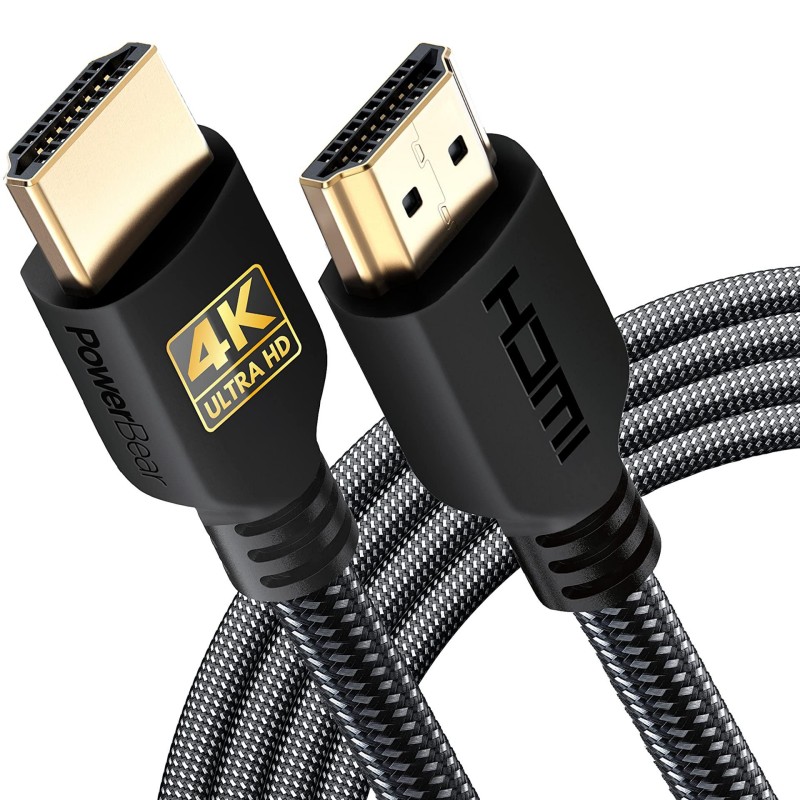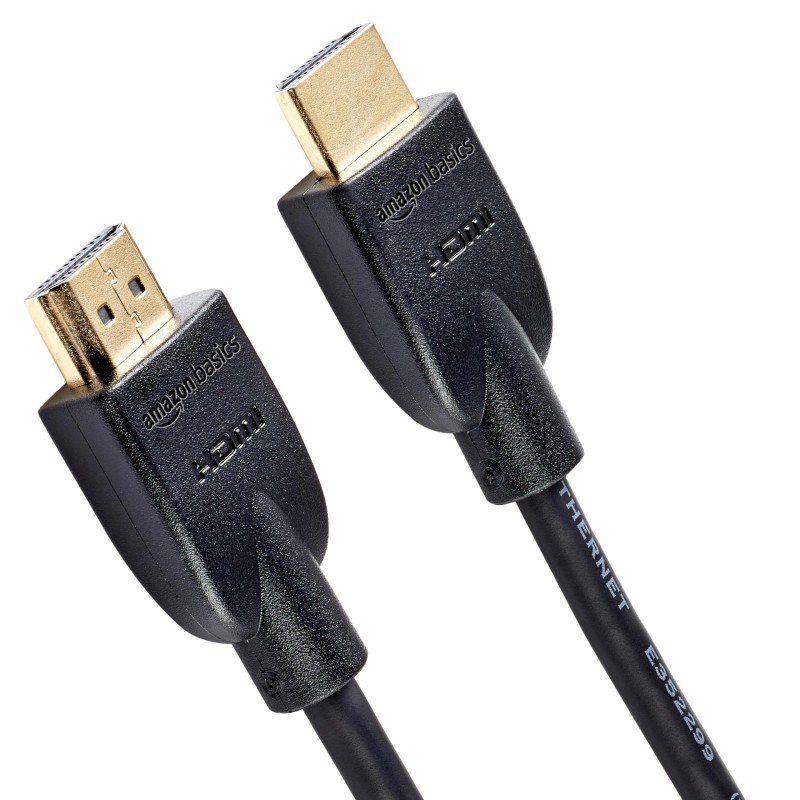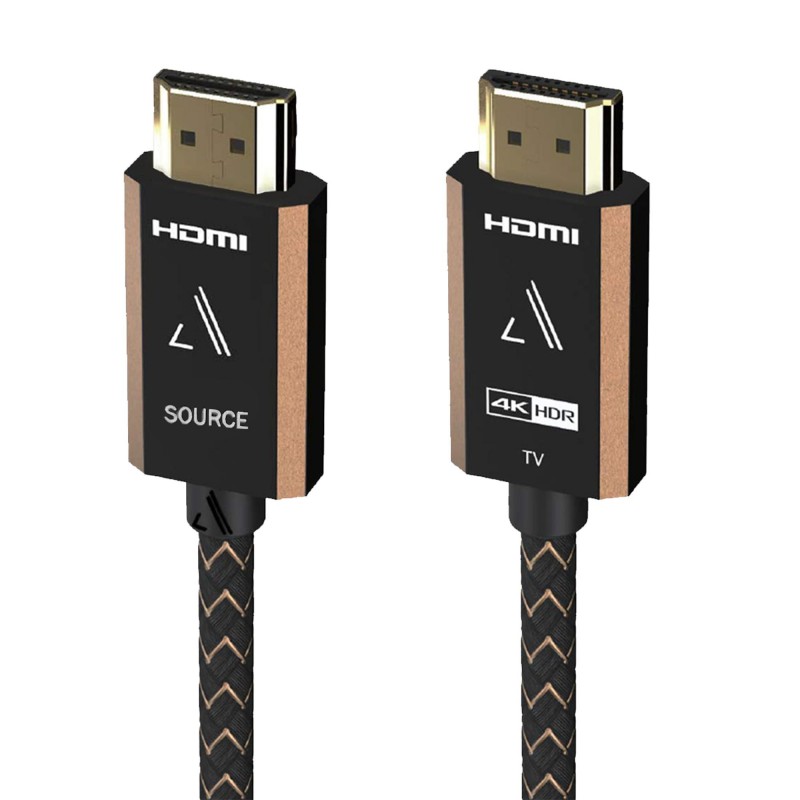As technology evolves, so do the methods we use to connect our devices and enjoy high-quality media. One of the crucial components of modern television setups is the HDMI cable, particularly when it comes to 4K TVs. HDMI cables for 4K TV are essential for transmitting high-definition video and audio signals from various devices, including Blu-ray players, gaming consoles, and streaming devices. With the increasing demand for 4K content and the shift towards higher resolutions, understanding the specifications and capabilities of HDMI cables becomes critical. This article aims to provide a comprehensive overview of HDMI cables suitable for 4K TVs, addressing key factors to consider when purchasing, the various types available, installation tips, and common troubleshooting issues. By the end of this guide, you will be equipped with all the necessary information to select the right HDMI cables for your 4K TV, ensuring an unparalleled viewing experience.
Understanding HDMI Technology
Before diving into the specifics of HDMI cables for 4K TV, it’s essential to understand what HDMI technology entails and how it enhances the viewing experience.
What Is HDMI?
HDMI, or High-Definition Multimedia Interface, is a technology standard developed in the early 2000s for transferring high-quality audio and video signals. HDMI cables streamline the connection process by providing a single cable solution that transmits both audio and video, reducing clutter and providing ease of use.
Evolution of HDMI Standards
Over the years, HDMI technology has evolved through various versions, each introducing new features and improvements. Some major advancements include:
- HDMI 1.0: The initial version supporting standard HD video resolutions.
- HDMI 1.4: This version introduced support for 4K resolution as well as the Ethernet channel, allowing for network data to pass through the cable.
- HDMI 2.0: This version increased bandwidth capacity and improved support for 4K video at 60 frames per second (fps), making it essential for sports and action content.
- HDMI 2.1: The most recent iteration, HDMI 2.1, supports 8K and 10K resolutions, Dynamic HDR, and enhanced audio return channel (eARC), among other features.
Understanding these developments allows consumers to appreciate the capabilities of HDMI cables, especially concerning high-resolution displays like 4K TVs.
Benefits of Using HDMI Cables for 4K TV
Utilizing HDMI cables for connecting a 4K TV presents numerous advantages, including:
- High Quality Audio/Video Transmission: HDMI cables support uncompressed video and multi-channel audio, ensuring the best possible quality for content.
- Simplified Connectivity: With a single cable carrying both audio and video, the setup becomes more streamlined, reducing clutter and confusion.
- Future-Proofing Your Setup: Using the latest HDMI cables helps ensure compatibility with future devices and technologies, protecting your investment.
By grasping the fundamentals of HDMI technology, consumers can better appreciate the significance of selecting the right HDMI cables for enhanced viewing experiences.
Key Features of HDMI Cables for 4K TV
When choosing HDMI cables for 4K TV, it’s essential to recognize key features that can affect performance. Here are the main specifications you should consider.
HDMI Version
As discussed earlier, HDMI cables come in various versions, each offering different capabilities. For 4K TVs, the minimum recommended standard is HDMI 2.0, as it supports 4K resolution at 60 Hz. Upgrading to HDMI 2.1 can provide even more benefits, particularly for high-frame-rate gaming and future-proofing.
Bandwidth
Bandwidth is vital when selecting HDMI cables. For 4K resolution, cables must have the ability to transmit data fast enough to handle the high resolution and frame rates.
- HDMI 2.0: Offers a bandwidth of 18 Gbps, suitable for 4K video at 60 Hz.
- HDMI 2.1: Supports a bandwidth of 48 Gbps, ensuring compatibility with high-resolution video formats like 8K and advanced features.
Supported Resolutions and Refresh Rates
Different HDMI cables support various resolutions and refresh rates:
- 4K (3840 x 2160) Resolution with higher refresh rates is ideal for a smooth viewing experience, especially in gaming and sports. Aim for a cable that supports 60 Hz for standard UHD content.
- Dynamic HDR: This feature, available in HDMI 2.1, optimizes each scene for enhanced contrast, brightness, and colors.
Build Quality
The build quality of HDMI cables can significantly impact their performance. Look for cables with:
- Shielding: Proper shielding reduces interference from other devices, ensuring a stable connection.
- Durable Materials: Cables made from high-quality materials, such as gold-plated connectors and nylon braiding, tend to be more durable and less prone to wear.
Length of Cable
Consideration of cable length is crucial for your setup, as longer cables can potentially result in signal degradation. In general, it’s best to select the shortest cable necessary for your setup to ensure optimal performance.
Certification
Look for HDMI cords that are certified for specific use cases. For instance:
- Premium High Speed HDMI Cables: These provide a reliable performance for 4K video and are proven to meet the necessary standards.
- Ultra High Speed HDMI Cables: Certified for HDMI 2.1 features, enabling 8K resolution with high bandwidth data rates.
Taking note of these key features will help you make an informed decision when selecting HDMI cables for your 4K TV.
Different Types of HDMI Cables for 4K TV
Several types of HDMI cables fit various applications and needs. Understanding these types allows you to choose appropriately based on your specific requirements.
Standard HDMI Cables
Standard HDMI cables are suitable for most everyday applications, such as connecting a DVD player or basic gaming consoles. They typically support video signals up to 1080p. However, for 4K resolutions, regular standard HDMI cables may not suffice.
High-Speed HDMI Cables
High-speed HDMI cables are designed to support higher resolutions, including 4K at 60 Hz. They can handle most content, making them a reliable choice for 4K TVs. High-speed HDMI cables are recommended for connecting streaming devices, Blu-ray players, and gaming consoles.
Premium High-Speed HDMI Cables
Premium high-speed HDMI cables are specifically tested to offer enhanced performance. They provide noticeable improvements in video quality and can transmit resolutions up to 4K with additional features like HDR. These cables are an excellent choice for high-end setups.
Ultra High-Speed HDMI Cables
Ultra high-speed HDMI cables are essential for anyone looking to maximize their 4K viewing experience, as they support the latest HDMI 2.1 specifications. With bandwidth capabilities of 48 Gbps, these cables are designed to handle advanced features, such as 8K resolution and Dynamic HDR.
Active HDMI Cables
Active HDMI cables contain built-in signal boosters that enhance performance over longer distances. These are ideal for setups where devices are located farther away from the TV. Active cables can maintain high-quality signals without degradation, ensuring the best picture and sound quality.

HDMI Adapters and Splitters
In some cases, you may need adapters or splitters to connect multiple devices to your 4K TV. HDMI splitters allow you to connect several devices using a single HDMI port. However, ensure that any splitter in your setup supports high-speed capabilities to avoid quality loss.
By exploring the various types of HDMI cables available for 4K TVs, you can better understand which types are suitable for your specific applications and setups.
How to Properly Install HDMI Cables for 4K TVs
Installing HDMI cables correctly is key to ensuring optimal performance. Here are essential tips for a successful installation:
Choose the Right HDMI Port
Most 4K TVs come equipped with multiple HDMI ports. Check your TV’s user manual to determine which ports support 4K resolution, especially if you have a model with specific ports optimized for HDR or other high-bandwidth features.
Use The Right Length
Selecting the appropriate length for HDMI cables is important. Before making a purchase, measure the distance between your TV and source devices. It’s advisable to avoid excessive lengths to minimize the risk of signal degradation.
Ensure Secure Connections
When connecting your HDMI cables, ensure that both the TV and source devices have secure connections. Loose connections can lead to signal loss or intermittent performance. Be gentle but firm when plugging and unplugging cables to prevent damage to connectors.
Manage Cable Routing for Safety
Ensure that cables are routed safely, avoiding exposure to heat, moisture, or sharp edges. Consider utilizing cable management systems or cable ties to keep cables organized and protected from damage, reducing clutter around your entertainment area.
Test the Setup
After connecting the HDMI cables, power on your devices and test the setup. Confirm that the picture and audio quality meet your expectations, and check all devices connected to make sure they function correctly.
Update Firmware When Necessary
In some instances, it may be beneficial to update the firmware on your devices to ensure compatibility. This can help eliminate any issues, especially with receiving 4K signals.
By taking these installation tips into account, you can ensure that your HDMI setup is working effectively and efficiently, allowing you to enjoy the full benefits of your 4K TV.
Troubleshooting Common Issues with HDMI Cables
Despite careful selection and installation, issues may arise when using HDMI cables with a 4K TV. Knowing potential problems and how to troubleshoot them can ensure a satisfying viewing experience.
No Signal on TV
If the screen displays “no signal,” several factors could be at play:
- Check Cable Connections: Ensure that both ends of the HDMI cable are securely connected. A loose connection might be the culprit.
- Try Selective Ports: If you have multiple HDMI ports on your TV, try switching to a different port to see if the issue resolves itself.
- Examine the Source Device: Ensure that the source device (like a Blu-ray player or streaming device) is powered on and functioning correctly.
Poor Picture Quality
If you experience poor picture quality, it could be due to a few misconfigurations or issues:
- Inspect the Cable: Verify that the HDMI cable used is rated for high-speed and compatible with 4K resolution.
- Cable Length: Ensure that the cable length doesn’t exceed recommended limits for optimal signal transmission. Long cables can cause degradation in picture quality.
- Settings Adjustments: Confirm that you’ve selected the proper output settings on your source device. Sometimes configurations may need to be adjusted for the best results.
Audio Issues
Audio problems can disrupt the entire viewing experience. Common solutions for troubleshooting audio include:
- Check Audio Settings: Verify the audio settings on both the TV and source device. Ensure that the correct audio output source is selected.
- HDMI-CEC Compatibility: If you are using HDMI-CEC (Consumer Electronics Control) settings, ensure that all connected devices support this feature correctly.
- Signal Compatibility: Ensure that both the TV and source devices support the same audio formats. Mismatches can lead to audio issues.
Flickering or Blurry Images
If you notice flickering or blurry images, consider the following:
- Cable Condition: Inspect the HDMI cable for any signs of wear or damage. A damaged cable can cause visual artifacts.
- Increase Refresh Rate: Research if your TV and source device support higher refresh rates. Increasing the refresh rate can lead to smoother visuals.
- Change Display Settings: Check the display settings in both the TV menu and your source device. Ensure they align with optimal settings for your 4K TV.
Black Screens or Distorted Images
If experiencing a black screen or noticeable distortion:
- Resolution Settings: Ensure that the resolution settings on the source device are compatible with what your 4K TV can display (ideally set it to 4K).
- Overheating: If devices are overheating, give them some time to cool down, as overheating may lead to performance issues.
By following these troubleshooting tips, you can effectively address common issues that may arise when using HDMI cables for a seamless 4K viewing experience.

Conclusion
In conclusion, understanding HDMI cables for 4K TV is essential for maximizing your enjoyment of the state-of-the-art viewing experience that modern televisions offer. With advancements in technology, choosing the right HDMI cable ensures you can take full advantage of the visual and audio capabilities available with your 4K setup.
From understanding different cable types and features to effective installation practices and troubleshooting, being well-informed helps guarantee that you get the most out of your investment.
Implementing the strategies covered in this guide will aid you in selecting the appropriate HDMI cables, ensuring sound performance, and navigating the complexities of modern technology. As the industry continues to evolve, staying updated on HDMI developments will empower you to enjoy your favorite content with unmatched clarity and quality.